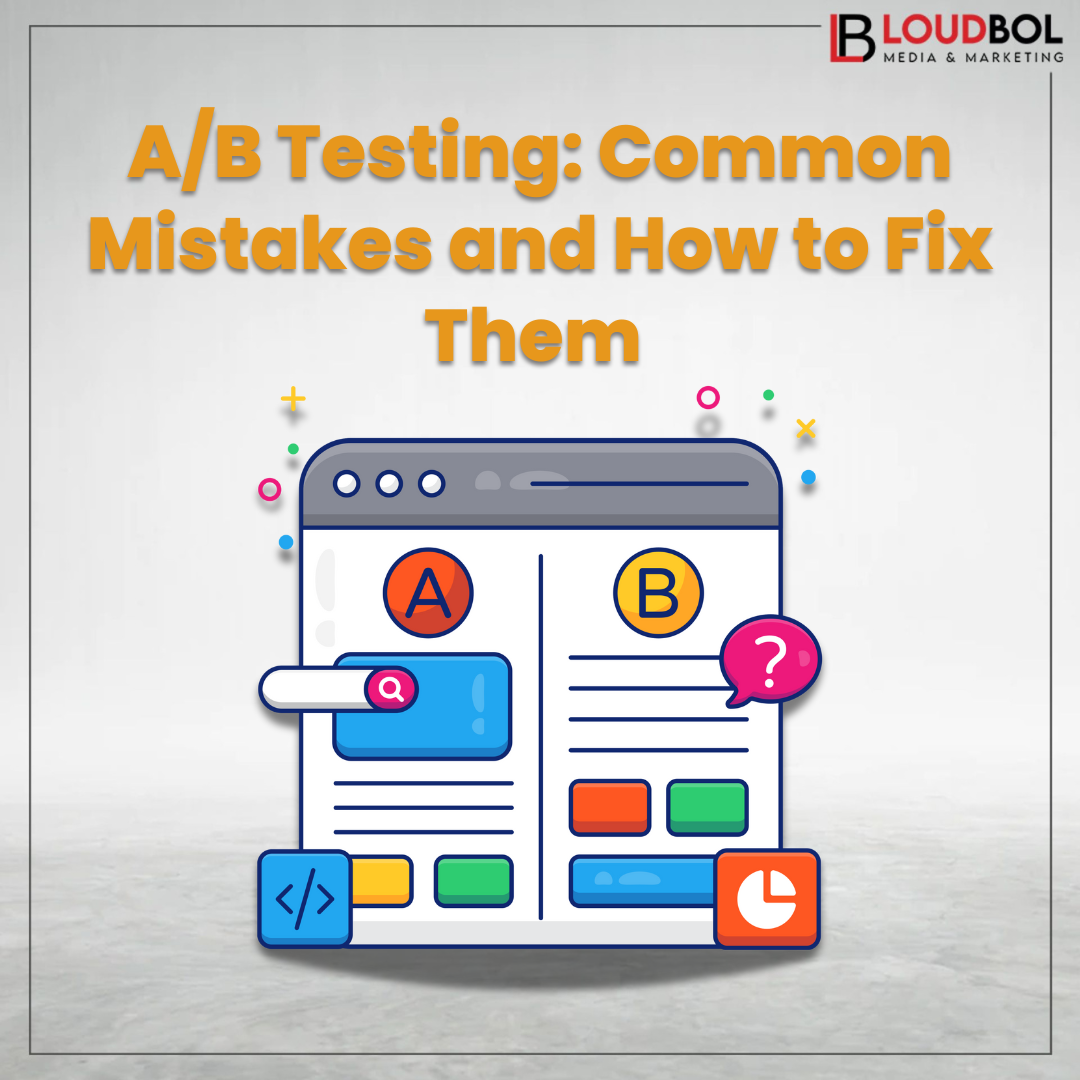A/B testing is a cornerstone of PPC marketing, allowing marketers to optimize marketing campaigns and achieve better results. However, even seasoned professionals can make mistakes.
In this comprehensive guide, we’ll explore the common A/B testing errors and provide actionable steps to rectify them.

1. Inadequate Sample Size
One of the most frequent mistakes in A/B testing is using insufficient sample sizes. A small sample size can lead to statistically insignificant results, making it difficult to draw reliable conclusions.
How to Fix:
Calculate Required Sample Size: Use statistical tools or calculators to determine the appropriate sample size based on desired confidence levels and effect sizes.
Monitor Conversion Rates: Monitor conversion rates for both variations and adjust the sample size if needed.
Consider Variation Complexity: More complex variations might require larger sample sizes.
2. Testing Too Many Variables
Testing multiple variables simultaneously in an A/B test can make it challenging to isolate the true impact of each change. This can lead to inconclusive results and wasted resources.

How to Fix:
Focus on One Variable: Conduct separate A/B tests for each variable you want to evaluate.
Prioritize Changes: Identify the most critical variables to test first based on their potential impact on performance.
Use Multivariate Testing: For more complex scenarios, consider multivariate testing, which allows you to test multiple variables at once.
3. Ignoring Bias
Bias can significantly influence A/B test results, leading to inaccurate conclusions. Common sources of bias include selection bias, survivor bias, and confirmation bias.
How to Fix:
Randomize Assignments: Ensure that test subjects are randomly assigned to variations to minimize selection bias.
Monitor All Variations: Track performance for all variations, even underperforming ones, to avoid survivor bias.
Be Objective: Avoid seeking out evidence that confirms your preconceived notions.
4. Overlooking Test Duration
A common pitfall is ending A/B tests too early. Insufficient test duration can lead to premature conclusions and missed opportunities for optimization.
How to Fix:
Set Clear Goals: Define specific conversion goals and metrics to track.
Monitor Statistical Significance: Use statistical tools to determine when the test has reached statistical significance.
Consider Seasonal Factors: Be mindful of seasonal fluctuations that might impact results.
5. Neglecting Post-Test Analysis
After an A/B test is complete, it’s essential to analyze the results thoroughly to understand the implications and inform future optimizations.
How to Fix:
Review Key Metrics: Examine conversion rates, click-through rates, and other relevant metrics.
Identify Significant Differences: Determine which variations performed significantly better or worse.
Analyze Qualitative Data: Gather feedback from users to understand why certain variations performed better.
6. Failing to Implement Winning Variations
Once a winning variation is identified, it’s crucial to implement it across your entire campaign to maximize its benefits.
How to Fix:
Roll Out Changes: Deploy the winning variation to all relevant ad groups or landing pages.
Monitor Performance: Continue to track performance after implementation to ensure the winning variation maintains its effectiveness.
7. Ignoring External Factors
External factors, such as seasonal trends, industry changes, or competitor activity, can influence A/B test results.
How to Fix:
Stay Informed: Monitor industry trends and competitor activity.
Adjust Test Parameters: If necessary, adjust test parameters for external factors.
8. Overreliance on A/B Testing
While A/B testing is a valuable tool, it’s not a silver bullet. Overreliance on A/B testing can hinder innovation and limit your ability to explore new opportunities.
How to Fix:
Combine with Other Strategies: Use A/B testing in conjunction with other optimization techniques, such as landing page redesigns or keyword research.
Be Open to Experimentation: Don’t be afraid to try new approaches and experiment with different ideas.
By understanding and addressing these common A/B testing errors, PPC marketers can improve the effectiveness of their campaigns and achieve better results. Remember, A/B testing is a continuous process that requires ongoing experimentation and analysis.
Visit LoudBol to read more informative blogs!




Average Rating